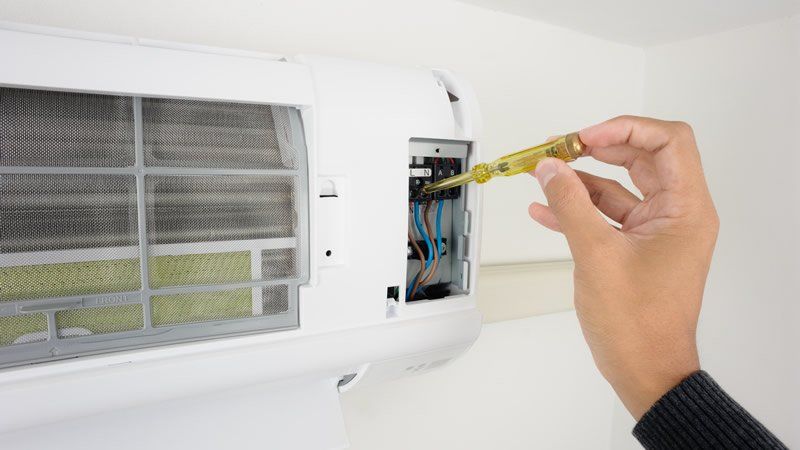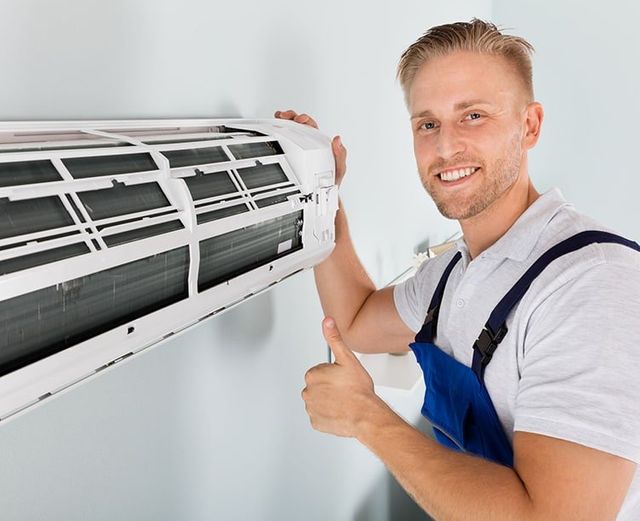With the summer heat coming in full swing, it is important to take a look at air conditioning options for your home. Split-system air conditioners are one of the most popular and effective choices when it comes to keeping you cool without spending too much money on electricity. In this article, we will talk about what they are, how they work, and why you should consider installing one in your home!

1. What is a split-system air conditioner
2. The advantages of using a split-system air conditioner
3. How to choose the right size for your home
4. Installation and maintenance tips
5. Additional considerations when purchasing an AC unit
6. Common misconceptions about split systems
What is a split-system air conditioner?
A split-system air conditioner is a type of cooling system that is installed in the basement and outside. It has two major components: an outdoor condenser unit and an indoor evaporator coil, which together work to circulate cold air throughout your home. If you’re installing a new HVAC system or replacing your old one, then it’s important to know what type of system you want before making any decisions on sizes or other features.
This type of air conditioner is the most popular type in America, and it’s a great choice for homeowners because they are generally inexpensive to purchase or install. The good thing about this type of system is that you can keep your home cool during warm summer months without taking up valuable floor space inside your house.
The condenser unit is typically located near the back of your home, while the evaporator coil can be installed either inside or outside.
Split-system air conditioners are perfect for homeowners because they don’t take up any valuable floor space in your house as a central air system would. This type of system also tends to be less expensive than other types of systems. Split-System Air Conditioners It has two major components: an outdoor condenser unit and an indoor evaporator coil, which together work to circulate cold air throughout your home. If you’re installing a new HVAC system or replacing your old one, then it’s important to know what type of system you need.
The advantages of using a split-system air conditioner
A split-system air conditioner is a great choice for homeowners who want to stay cool and comfortable without cranking up their energy bills. Split systems are more efficient because they use the heat from your home or business to generate cold air, which means that this type of system will produce colder temperatures with less power than a typical window unit.
These units also have an easy installation process and provide plenty of cooling power, so you can be sure that you’ll be able to keep your house at the perfect temperature all summer long!
If you’re not sure whether a split-system air conditioner is the best option for your home or business, consider these points. Split systems are more efficient because they use the heat from your home or business to generate cold air, which means that this type of system will produce colder temperatures with less power than a typical window unit.
Homeowners spend a lot of money per year on electricity bills, so this type of air conditioner will save you on your bills as well. These units also have an easy installation process and provide plenty of cooling power, so you can be sure that you’ll be able to keep your house at the perfect temperature all summer long!
There is a maintenance fee attached to these systems which should be noted before purchasing one for your home or business. The fees typically range from $25-$75 each year depending on what kind of system it is – although there are some models that come with their own warranty plan included in the price tag.
There is a maintenance fee attached to these systems which should be noted before purchasing one for your home or business. The fees typically range from $25-$75 each year depending on what kind of system it is – although there are some models that come with their own warranty plan included in the price tag.
How to choose the right size for your home

Choosing the right size split-system air conditioner for your home can be difficult and you may want to consult with a professional before purchasing one so that they can recommend an appropriate model based on how big or small it is as well as what kind of space will need cooling. There are also some considerations such as whether or not there will be other appliances being used at the same time that could contribute to an increase in energy use which should be taken into account. The first thing you’ll want to do is identify the BTU rating of your home’s current air conditioner and have a professional measure the square footage to figure out what size you’ll need. SEER rating is also important when choosing a model and is the measure of how much power an air conditioner uses to run. A higher SEER rating means greater efficiency but a lower BTU means less cooling power or capacity needed.
The average person would require about 12,000 BTU for their home if it’s under 1500 square feet in an area with moderate insulation. A house over 2500 square feet will need 18,000 BTU or more; those homes have extreme climate considerations such as heat islands where they might need 25-35,000BTUs per hour to keep up with the hot temperatures outside during peak hours which can be five times that needed by smaller houses.
Installation and maintenance tips
A split-system AC is a cost-effective alternative to central air conditioning, but it can be more costly to install. Split system ACs do not need ductwork and are much easier to install than other types of systems. Here are some tips for installation and maintenance.
Hire an expert HVAC contractor. Many technicians can install a split-system AC, but there are some key differences. Hire someone who has experience working with this type of system to ensure the job is done correctly and effectively.
Use quality materials for installation. The compressor should be bolted securely to floor joists or mounting brackets so it doesn’t move around during operation; use expansion joints when needed near walls and avoid using pipe thread tape on fittings because it could cause leaks that may not show up until later. For example, make sure pipes don’t touch anything as they run through floors or ceilings – insulation material goes between them instead of taping them together; take care in routing air ducts so they aren’t too close to electrical wires which might overheat nearby components and start a fire.
Know what the different parts do. A power-vent air conditioner has an outdoor unit with a compressor, condenser coils, fan coil, and evaporator; when it senses heat on the inside of your home or office building, it blows air through these components to cool things down off the roof of your house (or wherever you installed them); they’re usually 36″ wide but can be wider if needed – some models are only 16″ deep so they fit better in tight spaces like closets or under stairways.
The indoor unit is where everything comes together: this includes cooling capacity adjustments for temperature control as well as humidity settings that help keep skin dry and reduce static electricity caused by drying clothes indoors; there’s also a heating coil that can help you heat your home if the air is not warm enough on its own.
Additional considerations when purchasing an AC unit
There are some considerations homeowners should keep in mind when purchasing an air conditioner. First, it is important to consider size; there are many different sizes of air conditioning units and they vary based on the square footage of your house, as well as how much insulation you have. Second, homeowners should think about their climate zone when choosing a new AC unit: some households require more cooling capability than others depending on where they live – for example, if you’re located near the equator or higher up in elevation.
Third, it’s also good to take into account energy efficiency ratings before making any decisions because newer models tend to use less power without sacrificing functionality. Lastly, you may want to think about the installation and maintenance of your air conditioner before purchasing one.
Purchasing a split-unit air conditioning unit can be one of the best ways to save money, but there are always tradeoffs. For one, air conditioners that are designed to work with a window unit can be significantly cheaper than air conditioning units for an entire house.
Common misconceptions about split systems
There are many misconceptions about split-system air conditioners, but they are a great way to save money and maintain comfort.
First, these systems can be installed in apartments without windows or homes where there is not adequate space for an entire unit. Secondly, the installation of this type of system often costs less because it involves only installing two pipes rather than four. Third, if you’re located near the equator or higher up in elevation, then a windowless room may benefit from one of these units more so than an entire house with plenty of natural ventilation options available year-round like ceiling fans and open windows during milder days.
Lastly, newer models tend to use less power without sacrificing functionality which means that your monthly bills will go down while still being able to enjoy the air conditioning in your home.


